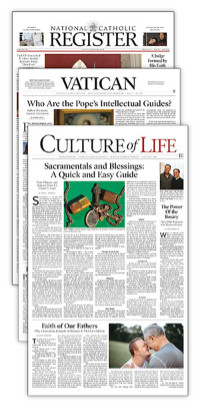
Why JRR Tolkien Made March 25 the Day the Ring Was Destroyed
From the Shire to Mount Doom, Frodo’s path was mapped with the Church calendar in mind — a quiet testament to Tolkien’s Catholic imagination.
From the Shire to Mount Doom, Frodo’s path was mapped with the Church calendar in mind — a quiet testament to Tolkien’s Catholic imagination.
I didn’t want the play to end.
How faithful was Peter Jackson’s adaptation to the religious and Catholic aspects of the work?
What is Tolkien’s contribution to his fellow man but celebration in the eucatastrophe — a happy ending that comes after a journey fraught with peril?
J.R.R. Tolkien’s mystic west was inspired by the legendary voyage of St. Brendan, who sailed on a quest for a Paradise in the midst and mists of the ocean.
Father Dwight Longenecker’s account of his life’s adventure is subtitled “a somewhat religious odyssey,” indicating that his life, like all our lives, is a quest to get to heaven.
The more we love characters like Scrooge and Gollum, the more we hate the sins that keep them in agony.
Tolkien’s world of thought could be the ideal bridge between the vague longings of modern youth and the truth of Christian tradition.
Connections to St. John Henry Newman (and other saints) included.
Tolkien made the choice to follow his mother into her new faith, receiving the sacraments of holy Communion and Confirmation at the age of 12.

Subscriber Service CenterAlready a subscriber? Renew or manage your subscription or gift subscription.
My AccountSubscribe for just $49.95 $32.50!Start your Register subscription today.
Give a Gift SubscriptionBless friends, family or clergy with a gift of the Register.
Order NowOrder Bulk SubscriptionsGet a discount on 6 or more copies sent to your parish, organization or school.
Order NowSign-up for E-NewsletterGet Register Updates sent daily or weeklyto your inbox.
Sign Up







